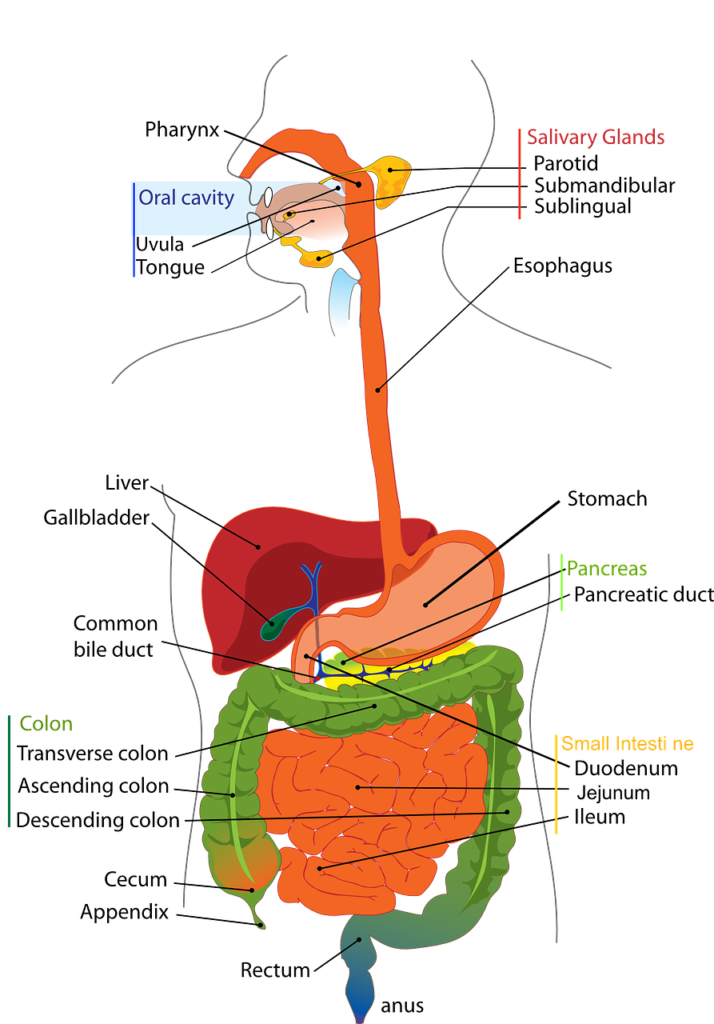The stomach “Function” is a vital organ responsible for the digestion of food. It is a muscular hollow organ situated in the upper abdomen, resembling an enlarged pouch. Its primary stomach function is to receive food from the esophagus and then mix, break down, and gradually transfer it to the small intestine.

As part of the larger digestive system, the stomach is a muscular tube that extends from the mouth to the anus. Individual stomach shapes and sizes vary depending on factors such as sex, body type, and eating habits.
The entrance of the stomach, where the esophagus meets, is typically closed off by the muscles of the esophagus and diaphragm. These muscles relax during swallowing, allowing food to enter the stomach. However, if this process fails, stomach acid may flow back into the esophagus, resulting in heartburn or inflammation.
The upper-left portion of the stomach, known as the fundus, curves toward the diaphragm. It is often filled with air that enters during swallowing. The main part of the stomach called the body, is responsible for churning and breaking down food into smaller pieces. It mixes the food with acidic gastric juice and enzymes, initiating the process of digestion. At the lower end of the stomach, the body narrows to form the pyloric canal, through which partially digested food passes into the small intestine.
The stomach wall consists of multiple layers, including mucous membranes, connective tissue, blood vessels, nerves, and muscle fibers. The muscular layer has three sub-layers, enabling vigorous movement of stomach contents. This movement crushes and grinds solid food, creating a smooth food pulp.
The inner lining of the stomach has visible folds, which facilitate the rapid flow of liquids through the stomach. Microscopically, the mucous membrane contains numerous tiny glands, categorized into three types. These glands produce digestive enzymes, hydrochloric acid, mucus, and bicarbonate.
Gastric juice, comprising digestive enzymes, hydrochloric acid, and other necessary substances, plays a crucial role in nutrient absorption. Approximately 3 to 4 liters of gastric juice are produced daily. Hydrochloric acid aids in food breakdown, while digestive enzymes assist in protein digestion. Moreover, the acidic nature of gastric juice helps eliminate bacteria. The mucus layer serves as a protective coating for the stomach wall, preventing damage from hydrochloric acid. Additionally, bicarbonate works in conjunction with mucus to safeguard the stomach wall.
Understanding the Functions and Structure of the Stomach
The stomach plays a vital role in the process of digestion, and it is comprised of various soft tissue components, including muscles, nerves, and mucosa. In this article, we will explore the anatomy of the stomach and its different parts.

- Cardia: Located at the top of the stomach, the cardia serves as the connecting point between the stomach and the esophagus.
- Fundus: Positioned to the upper left of the cardia, the fundus is a dome-shaped area that is often filled with gas.
- Body: The central part of the stomach is known as the body. It is responsible for processing and breaking down the food you consume.
- Antrum: Situated in the lower portion of the stomach, the antrum serves as a reservoir for the food you eat.
- Pylorus: The pylorus is located at the bottom of the stomach and acts as a gateway, connecting the stomach to the duodenum and the small intestines.
The stomach wall consists of five distinct layers, each playing a crucial role in its function:
- Mucosa: The innermost layer of the stomach wall contains glands that produce digestive juices, enabling the breakdown of food.
- Submucosa: Supporting the mucosa, the submucosa contains gastric folds known as rugae, along with blood vessels, lymphatic vessels, and nerves.
- Muscularis: Composed of thick muscles, the muscular layer aids in the mixing of food with digestive juices, facilitating the digestive process.
- Subserosa: This layer contains supportive tissues for the serosa, contributing to the structural integrity of the stomach.
- Serosa: Acting as the outermost layer, the serosa envelops the stomach, providing protection and containment. Understanding the intricate anatomy of the stomach and its various components is crucial for comprehending its role in digestion. By supporting the breakdown of food through muscle contractions, secretion of digestive juices, and nutrient absorption, the stomach plays a vital role in maintaining overall digestive health.
GASTRIC SIZE REDUCTION SURGERY: AN EFFECTIVE SOLUTION FOR WEIGHT LOSS...>>> https://bestofhealthtips.com/gastric-size-reduction-surgery-an-effective-solution-for-weight-loss/

Pingback: surgery to reduce stomach size